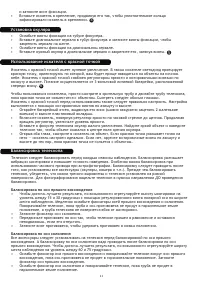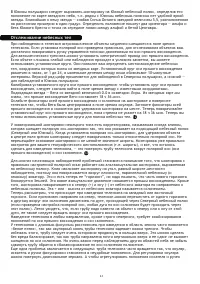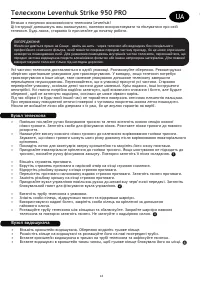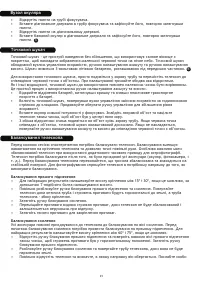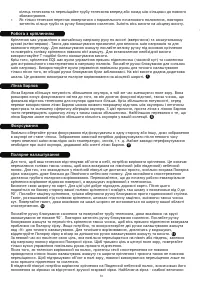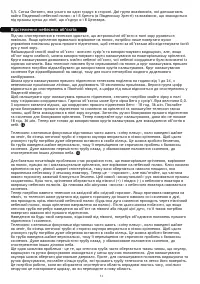Телескопы Levenhuk Strike 900 PRO - инструкция пользователя по применению, эксплуатации и установке на русском языке. Мы надеемся, она поможет вам решить возникшие у вас вопросы при эксплуатации техники.
Если остались вопросы, задайте их в комментариях после инструкции.
"Загружаем инструкцию", означает, что нужно подождать пока файл загрузится и можно будет его читать онлайн. Некоторые инструкции очень большие и время их появления зависит от вашей скорости интернета.
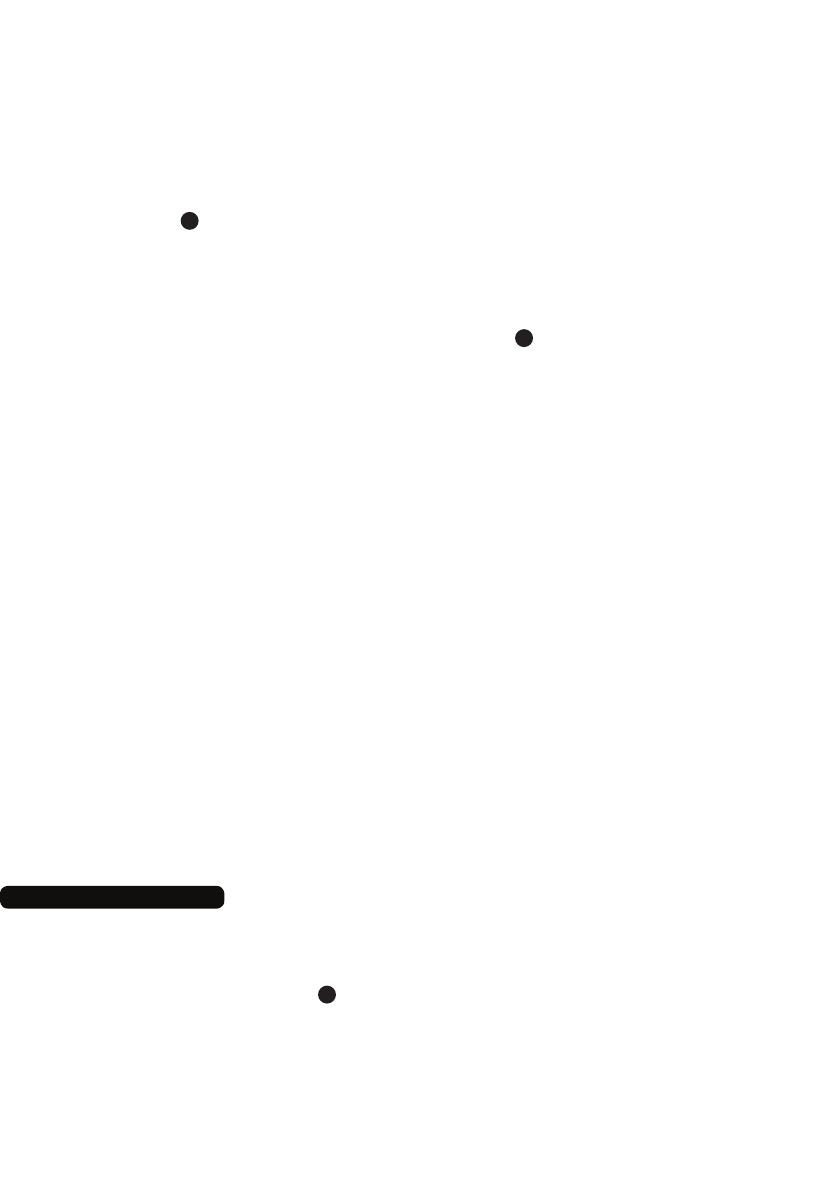
13
low you to locate celestial objects whose celestial coordinates have been determined from star charts.
The telescope’s R.A. setting circle is scaled in hours, from 1 to 24, with small lines in between rep-
resenting 10 minute increments. The upper set of numbers applies to observations in the Northern
Hemisphere, while the numbers below them apply to observations in the Southern Hemisphere.
Setting (calibrating) the R.A. setting circle: in order to set your Right Ascension circle you must first
find a star in your field of view with known coordinates. A good one would be the 0.0 magnitude star
Vega in the Constellation Lyra. From a star chart we know the R.A. coordinate of Vega is 18h 36m.
Loosen the R.A. and DEC. lock knobs on the mount and adjust the telescope so that Vega is centered in
the field of view of the eyepiece. Tighten the R.A. and DEC. lock knobs to lock the mount in place. Now
rotate the R.A. setting circle until it reads 18h36m. You are now ready to use the setting circles to find
objects in the sky.
A German Equatorial mount has an adjustment, sometimes called a wedge, which tilts the mount’s
polar axis so that it points at the appropriate Celestial Pole (NCP or SCP). Once the mount has been
polar aligned, it needs to be rotated around the polar axis only to keep an object centered. Do not
reposition the mount base or change the latitude setting. The mount has already been correctly aligned
for your geographical location (i.e. Latitude), and all remaining telescope pointing is done by rotating
the telescope tube around the polar (R.A.) and declination axes.
A problem for many beginners is recognizing that a polar-aligned, equatorial mount acts like an alt-az-
imuth mount which has been aligned to a celestial pole. The wedge tilts the mount to an angle equal
to the observer’s Latitude, and therefore it swivels around a plane which is parallel to the celestial
(and Earth’s) equator. This is now its “horizon”; but remember that part of the new horizon is usually
blocked by Earth. This new “azimuth” motion is called Right Ascension (R.A.). In addition, the mount
swivels North (+) and South (-) from the Celestial Equator towards the celestial poles. This plus or
minus “altitude” from the celestial equator is called Declination (Dec.).
Now, consider pointing the telescope to the western or eastern horizon. If the counterweight is point-
ing North, the telescope can be swiveled from one horizon to the other around the Dec. axis in an arc
that passes through the NCP (any Dec. arc will pass through the NCP if the mount is polar-aligned). It
can be seen then that if the optical tube needs to be pointed at an object north or south of this arc, it
has to be also rotated around the R.A. axis.
Pointing in any direction other than due North requires a combination of R.A. and Dec. positions.
Telescopes with long focal lengths often have a “blind spot” when pointing near the zenith, because
the eyepiece-end of the optical tube bumps into the mount’s legs. To avoid this, the tube can be very
carefully slipped up inside the ring clamps. This can be done safely because the tube is pointing almost
vertically, and therefore moving it does not cause a Dec. balance problem. It is very important to move
the tube back to the Dec. balanced position before observing other sky areas.
Something which can also be a problem is that the optical tube often rotates so that the eyepiece,
finderscope and the focusing knobs are in less convenient positions. The diagonal mirror can be rotated
to adjust the eyepiece. However, to adjust the positions of the finderscope and focusing knobs, loosen
the tube rings holding the telescope tube and gently rotate it. Do this when you are going to observe
an area for while, as it is inconvenient to repeat every time you briefly go to a new area.
Finally, there are a few things to consider to ensure that you are comfortable during the viewing
session. First is setting the height of the mount above the ground by adjusting the tripod legs. You must
consider the height that you want your eyepiece to be, and if possible plan on sitting on a comfortable
chair or stool. Very long optical tubes need to be mounted higher or you will end up crouching or lying
on the ground when looking at objects near the zenith. However, a short optical tube can be mounted
lower so that there is less movement due to vibration sources, such as wind. This is something that
should be decided before going through the effort of polar aligning the mount.
Camera adapter
To attach a camera to your telescope you may need an adapter to get the camera focused. Some re-
flectors require wider motion range than the one allowed by the focuser; some refractors are designed
to be used with diagonal mirrors and thus need a longer focal length when used with camera.
To achieve that, simply attach an extender to the focuser of your telescope and then attach the cam-
era with a T-adapter to the extender.
14
13
12
Содержание
- 42 Телескопы Levenhuk Strike 950 PRO; Сборка монтировки и трубы телескопа
- 43 Балансировка по оси прямого восхождения; Установка окуляра
- 44 Использование монтировки; широты вашей местности.; Линза Барлоу; фокусировка при смене окуляра или установке/снятии линзы Барлоу.; Установка полярной оси; найдите и центрируйте Полярную звезду, глядя в искатель.
- 45 Отслеживание небесных тел; для наблюдений в Южном полушарии.
- 46 Адаптер для камеры; фотографировании близко расположенных объектов.; Технические характеристики; Использование элементов питания; воспламениться или взорваться.
- 47 Выключайте прибор после использования.; Уход и хранение; ОПАСНО ДЛЯ ЗРЕНИЯ И МОЖЕТ ПРИВЕСТИ К СЛЕПОТЕ!; для чистки оптики компании Levenhuk.; Международная гарантия; пожизненная
- 48 Дополнительная комплектация; Планисфера — подвижная карта звездного неба.
- 60 ухода за оптическими приборами.; Засоби догляду за оптикою Levenhuk; за оптичними пристроями.; Levenhuk® is a registered trademark of Levenhuk, Inc.










































